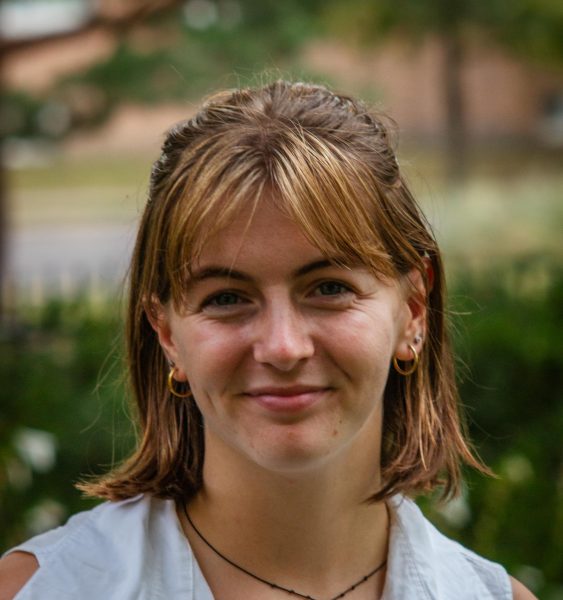Shaping a class: how the student body at Macalester is molded

November 3, 2022
According to Macalester’s recently released 2022 Fall Census Data, the college is made up of 2175 students, fifty-five percent of which identify as female, thirty-two percent of which identify as students of color, and thirteen percent of which are international students. These numbers are not random, but by design; carefully crafted by the college to reflect the campus the senior leadership team wants to see. Brian Lindeman ’89, Assistant Vice President of Admissions and Financial Aid at Macalester and a Macalester alum, has watched the campus grow and change according to those orders over decades and is now a part of the process.
“Enrollment [and our] recruiting goals are a response to what the college, especially the senior leadership team and [the] Board of Trustees, decides are the marching orders,” Lindeman said. “Then we try to execute what we hear from them. Those [goals] include academic quality, geographic diversity, racial and ethnic diversity, and budget.”
The senior leadership team works with multiple departments to ensure the student body represents the interests of each group. Hana Dinku, director of diversity education, leadership and inclusion within the Department of Multicultural Life, is involved with the Institutional Equity Division, alongside Title IX and the Center for Religious and Spiritual Life.
“We have conversations in our division about what our campus needs and what our work needs to focus on,” Dinku said. “The other folks on the leadership team are hyper-aware of what our campus needs. They take feedback from different departments, different areas, and try to put together a plan for [enrollment goals].”
These conversations are decided by a number of things, ranging from what the current student body looks like to what other small liberal arts colleges are doing to how the college wants to shape future classes. Enrollment goals are taken into consideration in every part of the process.
“[We] don’t know much about who our applicants will be so it’s a wide net, trying to ensure those enrollment priorities are part of recruiting,” Lindeman said. “Then at the selection process, we know a lot more about who’s actually interested in Macalester so we can review our selections in light of those enrollment priorities.”
In the selection stage, admissions uses a model based on enrollment goals and current and past class data to predict who, if offered admission, will accept. That model is then adjusted to create the ideal class, and those students are offered admission.
“What actually happens is always a little bit different than what the model predicted,” Lindeman said. “The only thing we ever know is that it won’t be exactly what we predicted, but on the whole you get an idea of who we’ll expect on campus and unless something really surprising happens, we come out in that ballpark.”
As social media and admissions outreach grows, so do the applicants, and the model adjusts to fit new parameters. In 2020, Macalester decided to allow students to apply test-optional, widening the scope of applicants as well as the overall number.
“It’s been a steady climb in [the] volume of applications, most recently when we decided to go test-optional,” Lindeman said. “That changed the landscape not only for Macalester but for almost every selective college.”
“In the same year we decided to go test-optional, we added an early action application,” he continued. “Those two things have changed the work quite a bit but also opened the door to a lot of great students who maybe would have hesitated to apply to Macalester in the past because of standardized testing.”
The influx of applicants creates a wider pool to choose from, making admissions’ job less about picking students whose profiles align with the school’s and more about selecting applicants who fulfill the enrollment goals.
“Having more applications [means] that we have more ability to shape the class as we’re making those selections,” Lindeman said. “As that ability has increased, so has our attention to making sure we have a racially and ethnically diverse student body.”
Macalester prides itself on internationalism and multiculturalism, with the enrollment goals working to hold those numbers steady. The college didn’t always have that mindset, however; much of it came from the large gift from the DeWitt Wallace estate in the early 1990s.
“One of the strategic initiatives that came with those resources was an increase in the amount of financial aid that was offered to international students which allowed us to enroll and get the attention of students around the globe in a way that we hadn’t been able to do before,” Lindeman said.
“We were somewhat unique and over the years as we were able to enroll more students from around the world, [we started] to build [a] reputation and Macalester became known as a place that offers need-based aid to international students and has an international mindset,” he continued.
Another reputation Macalester works to maintain is one that’s welcoming to LGBTQ+ students, and, similarly to international students, that reputation has been building for decades.
“I remember in my Macalester days [it seemed] like a place where conversations were happening,” Lindeman said. “[As Macalester] created [and worked on becoming] a place that was LGBTQ friendly, I think the word spread and the Twin Cities have helped create a feeling that this is a place that is relatively safe and welcoming. I don’t want to suggest things are perfect in any way [but we’re making] gradual improvement.”
Looking to the future, Macalester’s current goals involve those small improvements for populations on campus and expanding those not as present.
“We absolutely need to continue to grow our BIPOC representation on campus, first-generation college students, the marginalized identities that folks hold in society,” Dinku said.












